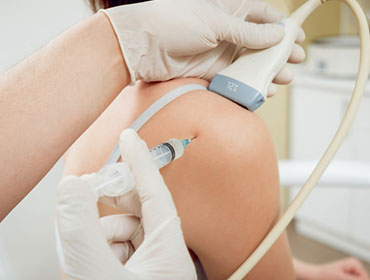Hydrodilation of Shoulder
Hydrodilation is a treatment for joints that have become painful and stiff as a result of scar tissue build-up. It's most commonly used to treat frozen shoulder. Adhesive capsulitis, often known as frozen shoulder, is a disorder that causes pain and loss of motion in the shoulder joint. Inflammation of the ligaments that link the shoulder bones to each other causes it. The shoulder capsule thickens and tightens, and adhesions, or stiff bands of tissue, form.
Frozen shoulder can affect those who have had a previous shoulder injury or surgery, have had their shoulder immobilised for a long time, or have other medical conditions such diabetes, hypothyroidism, hyperthyroidism, Parkinson's disease, or heart disease.
The hydrodilation method is injecting a fluid into the joint space, which widens the area and loosens the joint by breaking up scar tissue.

